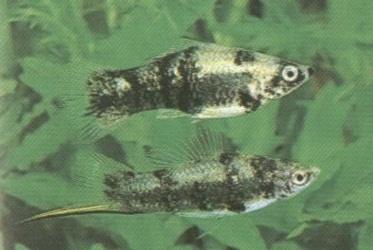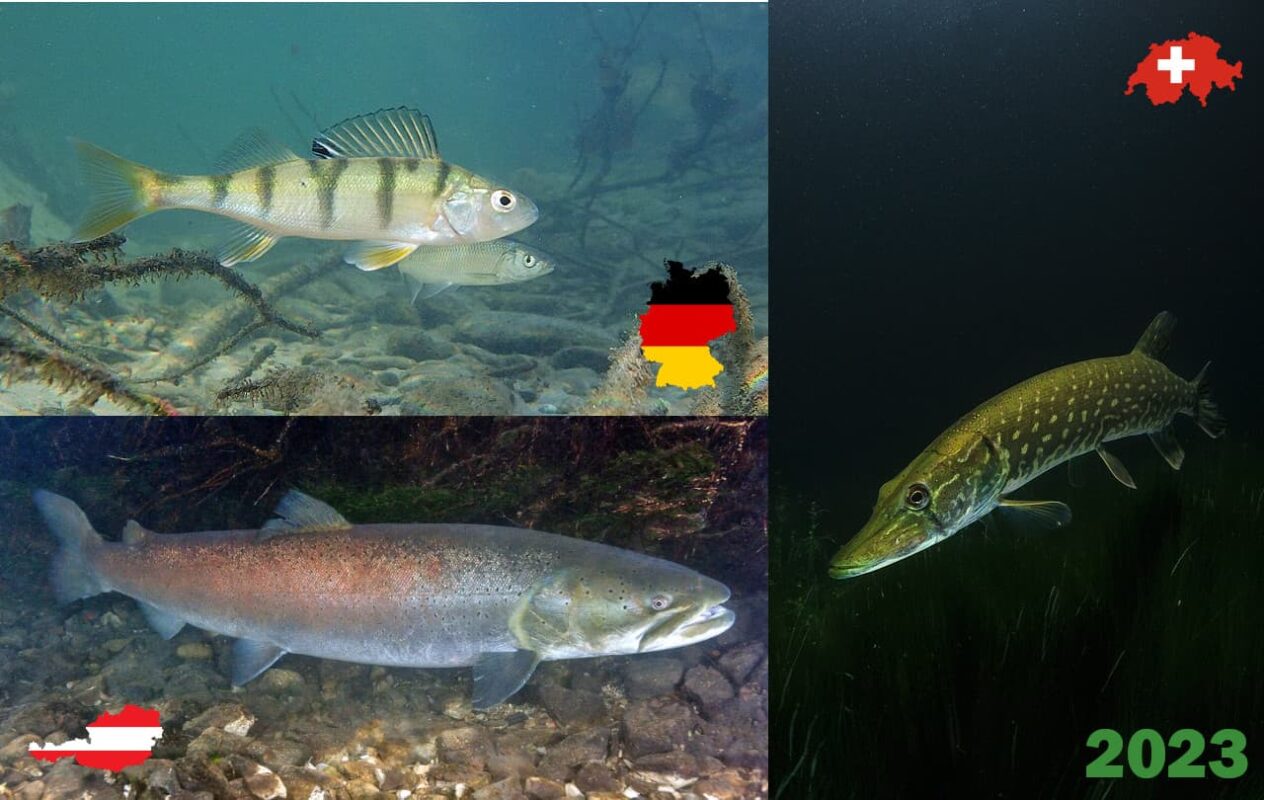“Biodiversity, this term is probably something everyone has encountered at some point in their school years. For many, this was quite a long time ago. So, what exactly does biodiversity mean?”
Biodiversity is often used as a synonym for species diversity. However, species diversity is only one aspect of biological diversity, which is what we refer to as biodiversity as a whole. The term is derived from the Greek word ‘bios’ (life) and the Latin word ‘diversitas’ (variety).
Diversity is important because life always occurs in interconnected ways: a single species cannot form a habitat on its own. Only the interplay of many different species keeps an ecosystem in a balanced, living state. Therefore, the extinction of any single species – meaning a reduction in biodiversity – is a loss for all life on this planet.
This is also the message the ‘International Day for Biodiversity’ aims to highlight, which we are celebrating today.
Against extinction
With the understanding of the interconnected nature of life, efforts are being made worldwide to combat species extinction and preserve endangered species. This is extremely difficult, given the ever-increasing land consumption by humans. On the other hand, there is no way around it if we don’t want to lose the foundation of life for all of us very quickly.
Zoos and other institutions are rising to the challenge of breeding endangered species in captivity and then releasing the offspring into the wild. Sometimes, a species has already gone extinct in the wild but still exists in zoos or research facilities. With great care and effort, a species can sometimes be reintroduced into nature based on these ‘remaining stocks’ in captivity. So far, around 50 animal species that have already gone extinct in the wild have survived thanks to the work of zoos – always following the motto of British zoologist Gerald Durrell[1]:
“Save them, breed them, keep them safe and then – if there still is a ‘there’ to put them back into – put them back there.”
(Translation: “Save them, breed them, keep them safe, and then – if there is still a ‘there’ to which they can be returned – reintroduce them there.”)
Gerald Durrell, britischer Zoologe, https://www.vdz-zoos.org/themen/natur-und-artenschutz
One such case, where a species has gone extinct just shortly after its discovery and initial description due to human intervention, but continues to live in captivity, is the Xiphophorus meyeri.
The genus Xiphophorus
Xiphophorus* is the genus name for ‘livebearing toothcarps,’ a group that currently includes 28 species.
Excursus: Genus term and taxonomy
A genus is a rank within the hierarchy of biological taxonomy. A genus groups together closely related species, while, conversely, related genera are grouped together into a ‘family.’
Whether several animals belong to the same species or different species is determined based on their characteristics and whether they can reproduce with one another. However, both are not mathematically ‘exact’ sciences: individuals of a species can sometimes differ greatly in appearance (as can be seen, not least, in humans), and even some different species can successfully mate. Researchers therefore focus particularly on changes in traits that do not vary greatly among individuals in order to distinguish species.
The sum of the identified differences that distinguish two species from each other is called their ‘morphological distance.’ The general principle is: the greater the morphological distance between two species, the less closely related they are. So, if two species show a smaller morphological distance to each other than to other similar species, it is assumed that the species with fewer differences – the smaller morphological distance – are more closely related to each other than species with a greater morphological distance (i.e., more differences between them).
The species grouped together in a common genus thus share a closer ‘ancestry.’ They are quite closely related and have only recently (‘just recently’) separated from each other in evolutionary terms, by changing one or more characteristics, so that they can no longer typically reproduce with each other.
While in the past, relationships of relatedness were often estimated solely based on physical characteristics, nowadays the genetic basis is usually also considered. Sometimes this leads to corrections of previously assumed relationships, for example, because genetic analysis shows that two physically similar traits are genetically completely different and therefore not truly identical (and thus not related), or that two very different-looking physical traits are genetically almost identical and therefore closely related.
The distribution range of the genus *Xiphophorus* is in Central America and southern North America.
Originally, the genus consisted solely of species where the males have a sword-like extension on their lower tail fin. The most famous representative is the swordtail (Xiphophorus hellerii). The name is derived from the Greek word xiphos (sword) and phorein (to carry), which led to the Latinized name Xiphophorus.
Through research, it is now known that platies (9 species) are related to swordtails, so they are now classified under the same genus.
The different Xiphophorus species range from 3.5 to 15 cm in size. There is a pronounced sexual dimorphism, meaning that males and females of the same species differ visually from one another.
The natural distribution of Xiphophorus species is highly variable; they can be found in flowing waters such as mountain streams, as well as in river mouths, lakes, swamps, and lagoons. All species are omnivores, feeding on invertebrates and plant matter.
Extinct but alive: Xiphophorus meyeri
A Xiphophorus species that was first described not long ago is Xiphophorus meyeri, Xiphophorus meyeri also known as the marble platy. It was last seen in the wild in 1997 and is considered ‘extinct in the wild.’ With this designation, it was added to the IUCN Red List in 2019.
The rapid extinction in the wild occurred because the species was only found in a few places. Originally from Mexico, it represented the northernmost species of the *Xiphophorus* genus. It was found in only a few locations, in a basin (Río Salado ecoregion) and a nearby spring. However, this spring is now used for the water supply of the city and surrounding agricultural businesses. In some years, it completely dries up due to this use. As with its close relative, the Monterrey platy (X. couchianus), it was the growing water consumption by humans in the region that led to the demise of this locally occurring species.
But that was not the end of Xiphophorus meyeri!
Because, like many fish species that have gone extinct in the wild, there is also a conservation program for Xiphophorus meyeri.
Species conservation also through private individuals.
Because Xiphophorus meyeri survived – live specimens remained in some research institutions and private aquariums. From there, efforts began to selectively breed the species again.
While Xiphophorus meyeri is less productive compared to other Xiphophorus species, it is still possible, starting with a single original fish, to produce a total of 19,000 offspring after four generations in just over a year (10 fry per litter, each of which then produces 10 fry per litter…), assuming a generation time of 12 weeks. In fact, the actual number of offspring in small fish is usually even higher.
And the care conditions are quite simple, comparable to those of common Xiphophorus species.
Why, then, is this fish still so rare in aquariums?
This is probably due to the appearance of the fish, as they can’t compete with the vibrant colors of their close relatives, such as Xiphophorus hellerii. As a result, there is little demand from aquarium enthusiasts. This is why rarities remain rarities – because they hardly attract anyone’s interest.
At the same time, the conservation program aims to engage private aquarium hobbyists to broaden the base of species conservation and strengthen the genetic diversity within the species.
The goal of this project is to strengthen the populations bred in aquariums, promote genetic diversity, and increase the number of fish to ensure the survival of the species. Anyone who would like to be part of our network and breed one or even several species of the northern platies is warmly welcome.
https://www.conservation.oevvoe.org/de/xiphophorus-northern-platyfish
Indeed, the project lists not only the Leipzig Zoo and the Berlin-Friedrichsfelde Zoo but also nine private individuals who keep and breed Xiphophorus meyeri.

Hint
Would you like to become part of the conservation program and breed X. meyeri at your place?
Then simply contact the project leader Markéta Rejlková or the deputy project leader Torsten Friedrich informally via email.
Only one thing remains to be hoped for: that in the near future, sufficient safe natural habitats will be found where the little companion can be successfully reintroduced!
Header image: ‘Livebearerguy’ via Wikimedia, License: CC BY-SA 4.0.





